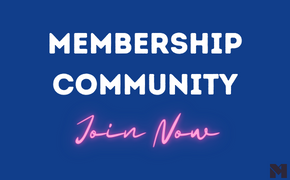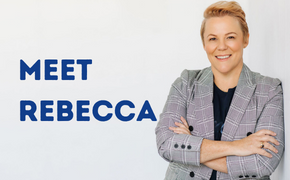I think we all know the story of Peter, the boy who cried wolf. He did it so many times that the townsfolk stopped listening, and when the wolf really did turn up they didn’t believe him and his sheep were all eaten up.
In our story, the townspeople are the Executive, the sheep are our Workforce and Peter is a B-Suite leader.
It’s been around five years since I first heard ‘unsustainable’ being used to describe contemporary workloads. No question the workload got heavier. Yet we sustained. No question our workloads got smaller, in the main. Yet we sustained.
We accidentally trained our Executive that, like Peter, we weren’t telling the truth. When they listened, showed compassion but then did very little about it, we simply found ways to do what they asked, and we kept showing that we could, so they kept expecting the same from us.
Doing more with less is the old game.
We underwent round after round of downsizing our workforce without once downsizing the workload. Round after round of proving our executive right – that we could sustain.
Fast forward to today, and for the first time since I joined the workforce, I do believe we are at capacity. Our workforces can’t do any more with any less – they are beginning to crack. The wolf is at the door, and Peter is struggling to persuade the townspeople that it’s real this time.
That’s why there’s a tendency at executive levels to put the wellbeing crisis largely down to Covid, remote working and ongoing uncertainty, instead of seeing workload as a major – and separate – contributor. Has Peter cried wolf so often that the executive are no longer listening?
Right now, people need to do less, not more. It’s why gifting staff with a day off feels like a great move but might not have the expected results. It’s why corporate wellness challenges and social catch-ups are on the decline and videos are getting increasingly switched off in meetings. People don’t have the capacity to do more: they need us to compromise so they can do less.
The do-more-with-less game was uncompromising – in that game, we stuck to our goals, assumed that priorities remained largely unchanged, and prized persistence. But the new game requires us to compromise instead.

The C-Suite needs to make the first move
It takes more than giving permission to see compromise work.
Take deprioritising as an example. Very few organisations deprioritise well, because it isn’t led from the top.
In complex businesses, mid-level leaders rarely have the full picture to make a deprioritising decision, so they end up telling you that they can’t deprioritise anything and you both get frustrated.
What they actually mean is they can’t see what else they can deprioritise – but you can. You’re the only ones with the breadth of perspective to identify what can viably be stopped or delayed. Call a compromise session and see what you can come up with – it won’t be easy, because it goes against the rules of the old game, but for that very reason, it needs to start with you.
Executives are also the ones with the political clout. If you make a call to a stakeholder or partner to say ‘we need to pause this’, you’ll get a very different reaction to if a B-Suite leader makes that call. So ask your B-Suite who you can call to negotiate a compromise – then pick up the phone yourself.
If you don’t lead the way in actively taking work off the table, even your well-meaning wellbeing day could become an overdue-day for an already overflowing workload. By actively delaying deadlines, downsizing expectations or stopping work, you’ll kill the wolf and save the flock
The B-Suite can take action too
Many of us are familiar with the Iron Triangle – it’s a project manager’s pocket companion to compromising and one of my favourite ‘you didn’t know you already knew it’ models to master.
(Yes, ‘Master of the Iron Triangle’ sounds pretty great, but that’s not the reason I love it. Honest.)

In almost everything we do in the workplace, you manage the levers of speed, cost, and quality. The reality is that you can only ever have two. Want it fast and cheap? It won’t be pretty. Want it good and quick? You’ll have to pay extra. Cheap and good? That takes time.
- Speed: Are your timeframes really set in stone? Find out who said so, and why that’s the case. Calculate the cost of pushing something back, and if it’s not as weighty as the cost of continuing to push forward – then you’re onto something.
- Cost: Are you being holistic about resourcing? Have you optimised the contribution of every single player in your model – including partners, suppliers, technology, and end-users? Or are you just looking at your direct team for capacity? Could you outsource, collaborate, create a self-service option or automate anything at all?
- Quality: Do you have to hit the gold standard for everything? Does every scenario and every stakeholder truly require the gold standard? Who’s actually pushing for the gold standard – the experts on your team or the end-user? In my experience, it’s very often the former making assumptions about the latter. How about introducing a silver and bronze standard to alleviate some of that perfection pressure?
What’s the moral of the story? I’d love to hear your thoughts.
The B-Suite in the Media this month
- Public Services News : Book Review for IMPACT
- The HR Director: How to be strategic without slowing down
- CEO World: The importance of negotiation in the B-Suite
- Governance Institute of Australia – How the C-suite is instrumental in developing future executives
Exciting Stuff
The Level Up Your Leadership program hosts keynote speakers every month as part of our curriculum dedicated to developing the impact of B-Suite Leaders. To find out more about how this program might help you, or members of your leadership team, why not come along to my next round-table, Thursday October 21st at 12:30pm.

Rebecca is Australia’s pre-eminent advocate for B-suite leadership – the expert in developing hi-impact B-Suite leadership at both a team and individual level.
Speak to Rebecca about:
- Individual and group coaching
- Team effectiveness and training
- People & Culture Advisory
You can reach her on [email protected]














